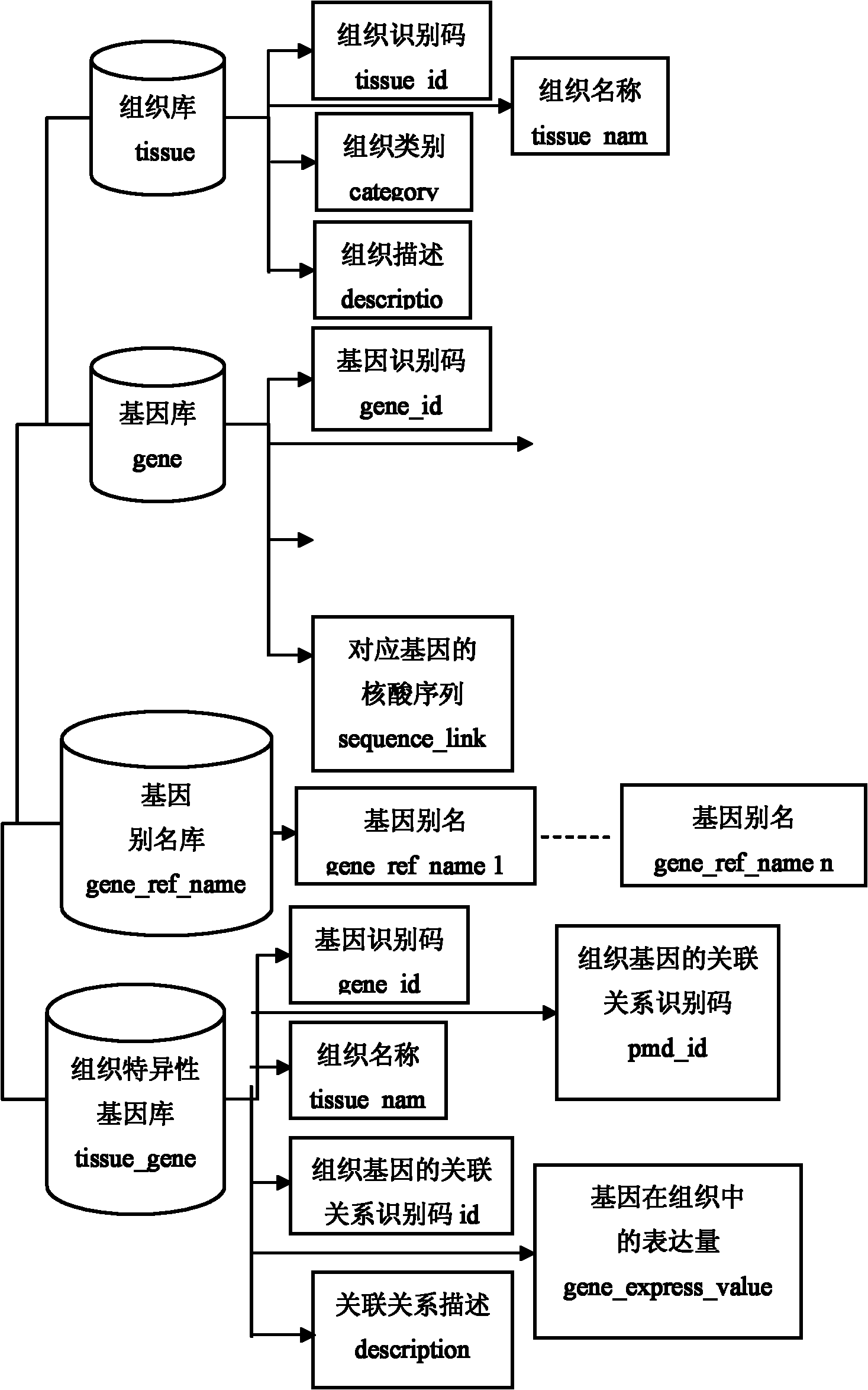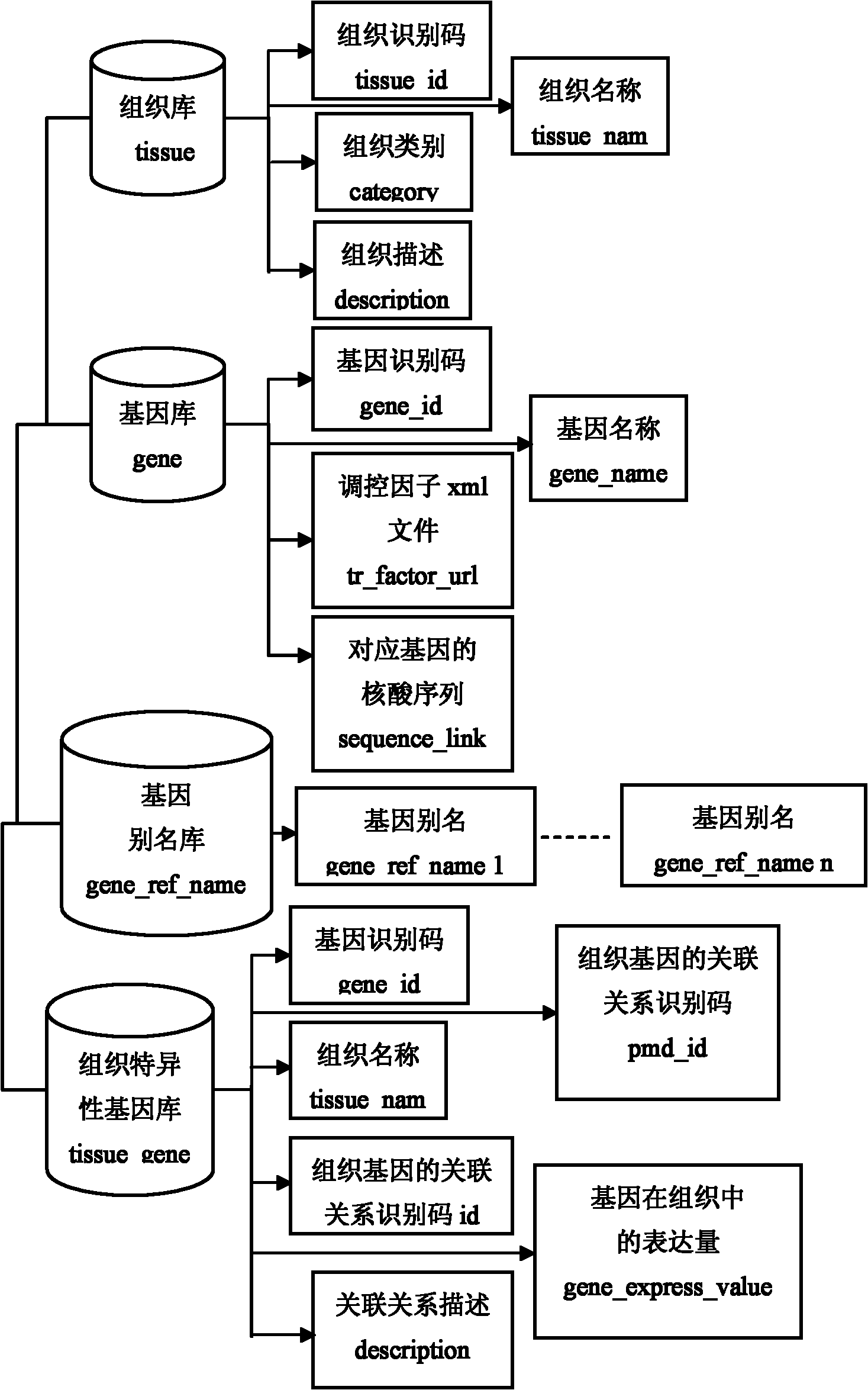Tissue-specific gene and regulatory factor data storage method
A tissue-specific and regulatory factor technology, applied in the field of bioinformatics, can solve problems such as inconsistent labeling and expression standards, multiple biological information databases, and reduced research quality and efficiency, and achieve the effect of improving quality and efficiency
- Summary
- Abstract
- Description
- Claims
- Application Information
AI Technical Summary
Problems solved by technology
Method used
Image
Examples
Embodiment Construction
[0018] The tissue library tissue includes all the tissue information in the database, including tissue_id, tissue_name, category, and description. Among them, tissue_id is a self-increasing variable, which uniquely identifies an organization in the tissue database; tissue_name corresponds to the name of the organization; category corresponds to the category of the organization (consistent with the classification standard in EMBL); description corresponds to the description of the organization.
[0019] The gene bank gene includes all tissue-specific gene information in the database, including gene_id, gene_name, tr_factor_url, and sequence_link. Among them, gene_id is self-increasing and uniquely identifies a gene in the gene library; gene_name corresponds to the name of the gene (a gene may have multiple names, where gene_name corresponds to the gene name in EMBL); tr_factor_url points to this The regulatory factor xml file corresponding to the gene; sequence_link corresponds...
PUM
 Login to View More
Login to View More Abstract
Description
Claims
Application Information
 Login to View More
Login to View More - R&D
- Intellectual Property
- Life Sciences
- Materials
- Tech Scout
- Unparalleled Data Quality
- Higher Quality Content
- 60% Fewer Hallucinations
Browse by: Latest US Patents, China's latest patents, Technical Efficacy Thesaurus, Application Domain, Technology Topic, Popular Technical Reports.
© 2025 PatSnap. All rights reserved.Legal|Privacy policy|Modern Slavery Act Transparency Statement|Sitemap|About US| Contact US: help@patsnap.com


